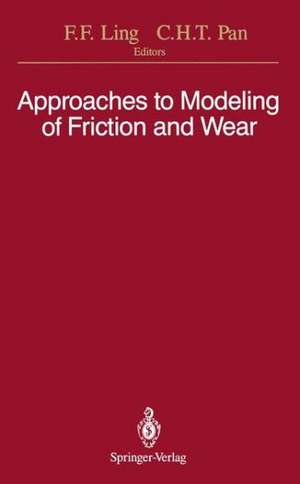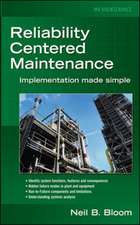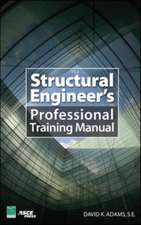Approaches to Modeling of Friction and Wear: Proceedings of the Workshop on the Use of Surface Deformation Models to Predict Tribology Behavior, Columbia University in the City of New York, December 17–19, 1986
Editat de Frederick F. Ling, C. H. T. Panen Limba Engleză Paperback – 27 dec 2011
Preț: 635.31 lei
Preț vechi: 747.43 lei
-15% Nou
Puncte Express: 953
Preț estimativ în valută:
121.56€ • 126.93$ • 100.38£
121.56€ • 126.93$ • 100.38£
Carte tipărită la comandă
Livrare economică 15-29 aprilie
Preluare comenzi: 021 569.72.76
Specificații
ISBN-13: 9781461283638
ISBN-10: 1461283639
Pagini: 192
Ilustrații: XIII, 173 p.
Dimensiuni: 155 x 235 x 10 mm
Greutate: 0.28 kg
Ediția:Softcover reprint of the original 1st ed. 1988
Editura: Springer
Colecția Springer
Locul publicării:New York, NY, United States
ISBN-10: 1461283639
Pagini: 192
Ilustrații: XIII, 173 p.
Dimensiuni: 155 x 235 x 10 mm
Greutate: 0.28 kg
Ediția:Softcover reprint of the original 1st ed. 1988
Editura: Springer
Colecția Springer
Locul publicării:New York, NY, United States
Public țintă
ResearchCuprins
1. Invited Area Lectures.- 1.1 Friction and Wear from The Materials Science Vantage Point.- 1.2 Modeling of Friction and Wear Phenomena.- 2. Workshop Summary.- 2. Workshop Summary.- 3. Contributed Brief Position Papers.- 3.1 Tribology Modeling.- 3.2 Modeling of Dry and Boundary Lubricated Contacts as Seen from The Hydrodynamicist’s Perspective.- 3.3 Assessing Research Needs in Tribology.- 3.4 Amontons and Coulomb, Friction’s Pounding Fathers.- 4. Contributed Brief Scientific Papers.- 4.1 On Use of Surface Deformation Models to Predict Tribological Behavior.- 4.2 Modelling Tribochemistry.- 4.3 Role of Nanostructure of Adsorbed Layers in Lubrication.- 4.4 A Proposed Model for the Development of High Temperature Fluids for Lubrication of Ceramics.- 4.5 Simple Model of Metalworking Friction Under Extreme Pressure.- 4.6 Use of Cutting Force in Disciplining Relations Between Abrasive Wear and Mechanical Properties.- 4.7 Large Plastic Deformation in Sliding Friction and Wear.- 4.8 Friction with Solid Lubricant Films.- 4.9 On The Role of Adhesion in The Wear Process.- 4.10 Possible Relationships Between Partial-Elastohydrodynamic Lubrication and Wear Modelling.- 4.11 Sliding Systems with No Wear.- 4.12 Comparison of Wear Chip Morphology with Different Models of “Adhesive” Wear.- 4.13 A Proposed Thermomechanical Wear Theory.- 4.14 Predictive Models for Sliding Wear.- 4.15 Surface Deformation Considerations for Rolling with Incipient Sliding.- 4.16 Some Thermal Implications on The Life of High Speed Rolling Element Bearings.- 4.17 Profilometric Roughness and Contact Fatigue.- 4.18 Two-dimensional Dynamics of Coulomb Friction.- 4.19 Microscopic Mechanisms of Tribological and Wear Processes: Molecular Dynamics Simulations.- 4.20 On Fractal Dimension of Engineering Surfaces.









